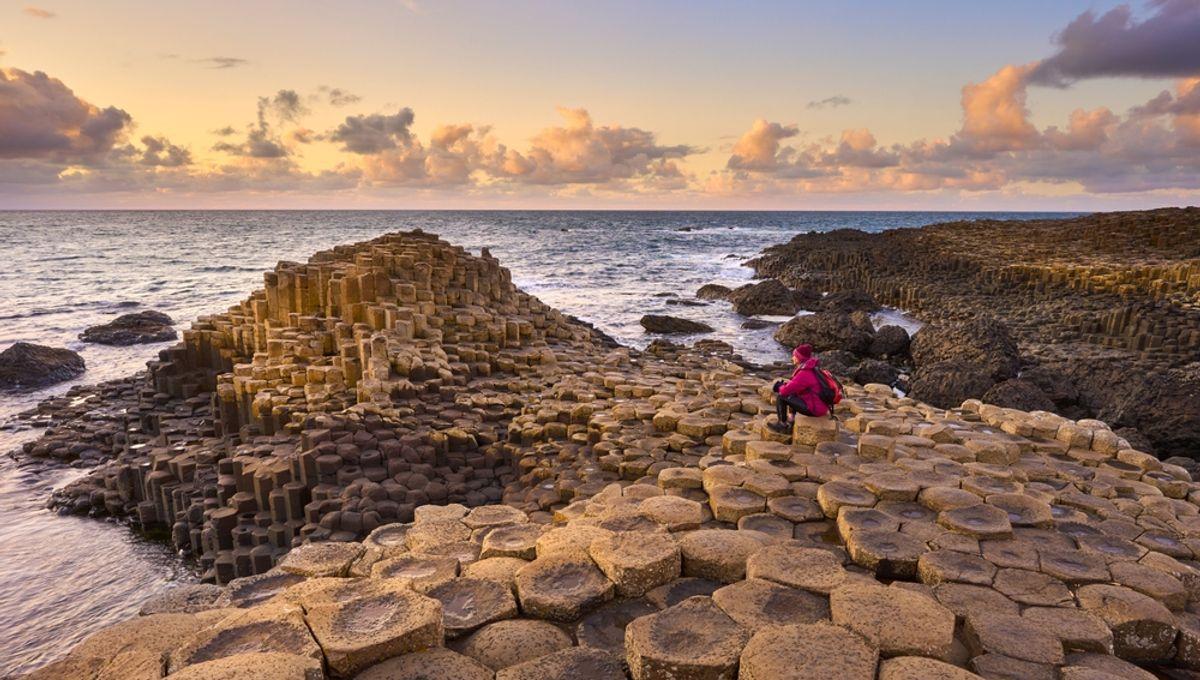Please Stop Jamming Coins Into The Rocky Cracks Of Legendary Giant's Causeway

Please Stop Jamming Coins Into The Rocky Cracks Of Legendary Giant's Causeway
Tourists have recently developed a troubling tradition of jamming coins into the rocks at Giant’s Causeway in Northern Ireland. While seemingly harmless, this practice is detracting from the site’s natural beauty and physically damaging the ancient geological formation.
These are the chief findings from a report by the British Geological Survey that found forcing coins into the cracks and joints of the Giant’s Causeway is causing both visual and physical harm to the iconic landmark. “The coins are rusting, and expanding to three times their original thickness, which puts huge pressure on the surrounding rock causing it to crumble. Unsightly streaks of copper, nickel and iron oxides are also staining the stones where the coins are corroding,” Dr Cliff Henry, National Trust Nature Engagement Officer at the Giant’s Causeway, said in a statement. “Many coins have a centre of one metal, with a thin coating of another. UK ‘copper’ coins, since 1992, have a steel core with only a thin layer of copper on the outside, while 5, 10, and 20 pence pieces are nickel-plated steel. When coins start to corrode, the steel often corrodes faster and separates from the different metal of the outer layer. This delamination causes the basalt to flake,” explained Dr Henry. He added that corrosion is accelerated by saltwater spray, which, combined with the mixed-metal composition of the coins, speeds up their breakdown. The National Trust has launched a campaign to stop the trend as the coins rapidly corrode and expand, damaging the hexagonal rocks that are almost 60 million years old. Image credit: (C) National Trust Giant’s Causeway draws visitors from around the globe, and the coins wedged in its rocks reflect this diversity. While most come from the UK or the European Union, others hail from East Asia, the US, and beyond. The National Trust, in partnership with Causeway Coast and Glens Heritage Trust, has been working with stone conservation specialists to remove as many of the coins as possible. A recent trial across 10 test sites showed that coins can be extracted without causing further damage, raising hopes the method can be applied more widely. Ultimately, the National Trust says visitors need to stop this damaging ritual. “We protect and care for places so people and nature can thrive. We are appealing to visitors to help us protect the World Heritage Site by stopping the practice of inserting coins into the Causeway stones,” they said in an appeal. Legend has it that Giant’s Causeway (Clochán an Aifir in Irish) was built by the Irish giant Finn McCool, also known as Fionn Mac Cumhaill, as a bridge to confront a rival giant in Scotland called Benandonner. The scientific explanation, however, is no less impressive: around 60 million years ago, during intense volcanic activity as the North Atlantic Ocean began to form, lava surged to the surface and cooled rapidly. As it contracted, it fractured into the iconic hexagonal columns seen today. This natural wonder is a textbook example of a geological process known as columnar jointing, which can be found elsewhere in the natural world.



